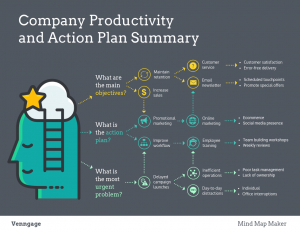When I first dipped a toe into the world of web content writing, I wrote only two or three blog articles a week and I had no problem organizing my work day. But, as my workload increased, I quickly found it almost impossible to keep track of what I had to do. At that point, each blog article and press release was represented in my todo app with a single item: “write blog about x”. That approach didn’t scale well; by the time I was working on a few dozen articles a month, each at a different stage ranging from topic discovery to final proofreading, I found I had no idea what I needed to do next. Steps were missed, and work became increasingly stressful.
Then I discovered the power of checklists and even the heaviest content creation workloads became manageable. The idea is simple: almost every piece of writing — or any other type of content — can be broken down into multiple smaller steps. For the most part, those steps are identical for every piece of writing of the same type. For every piece of writing I embark on, I create checklists based on templates I have developed and tweaked over the years.
A simple example of a blog post checklist template might look like this:
- Develop topic
- Research
- Write an outline
- Write the draft
- Edit the draft
- Final proofread
- Publish on WordPress
The checklists I use every day have more items, but that’s part of the beauty of checklists — they can easily be modified to suit specific tasks.
There is a substantial body of research that shows checklists can make a positive difference to productivity, efficiency, and even safety.
Checklists For Productivity
Checklists have made a huge difference to my productivity. Before I used checklists to manage my work, a good chunk of my time was spent assessing what needed to be done on each project before I could write or edit anything. By using checklists, I make sure that I’m never confused about what needs doing next, and I can get down to what matters — writing and editing — almost immediately.
Checklists For Organization
I often work simultaneously on ten or more pieces of content at various stages of production. Each morning, I sit down and look at the checklists for my current work. I know exactly what needs doing to move each piece of content through the process, and I can prioritize accordingly. Nothing gets missed.
Checklists To Fight Procrastination
I’m a writer. As a group, we’re notoriously prone to procrastination. Research shows that one of the best ways to defeat procrastination is to chop a task up into smaller tasks that don’t seem so daunting. When I have “write 1500-word article about content marketing” on my todo list, I’m quite likely to find something I’d rather be doing, like cleaning the grouting in the bathroom.
When the same task is broken into smaller chunks that take about twenty minutes to do, there’s a lower psychological barrier to cross. I start with one small job — reading some of the links I’ve gathered, sketching a preliminary outline, writing a rough draft — and find it much easier to get into a productive frame of mind.
Tools For Checklists
It doesn’t actually matter which tools you use. Until recently I managed checklists in OmniFocus. Now I use 2Do. But I could just as easily use a notebook, or a printed template. It’s not important how you manage checklists, just that you form the habit.
Digital & Social Articles on Business 2 Community(33)
Report Post




